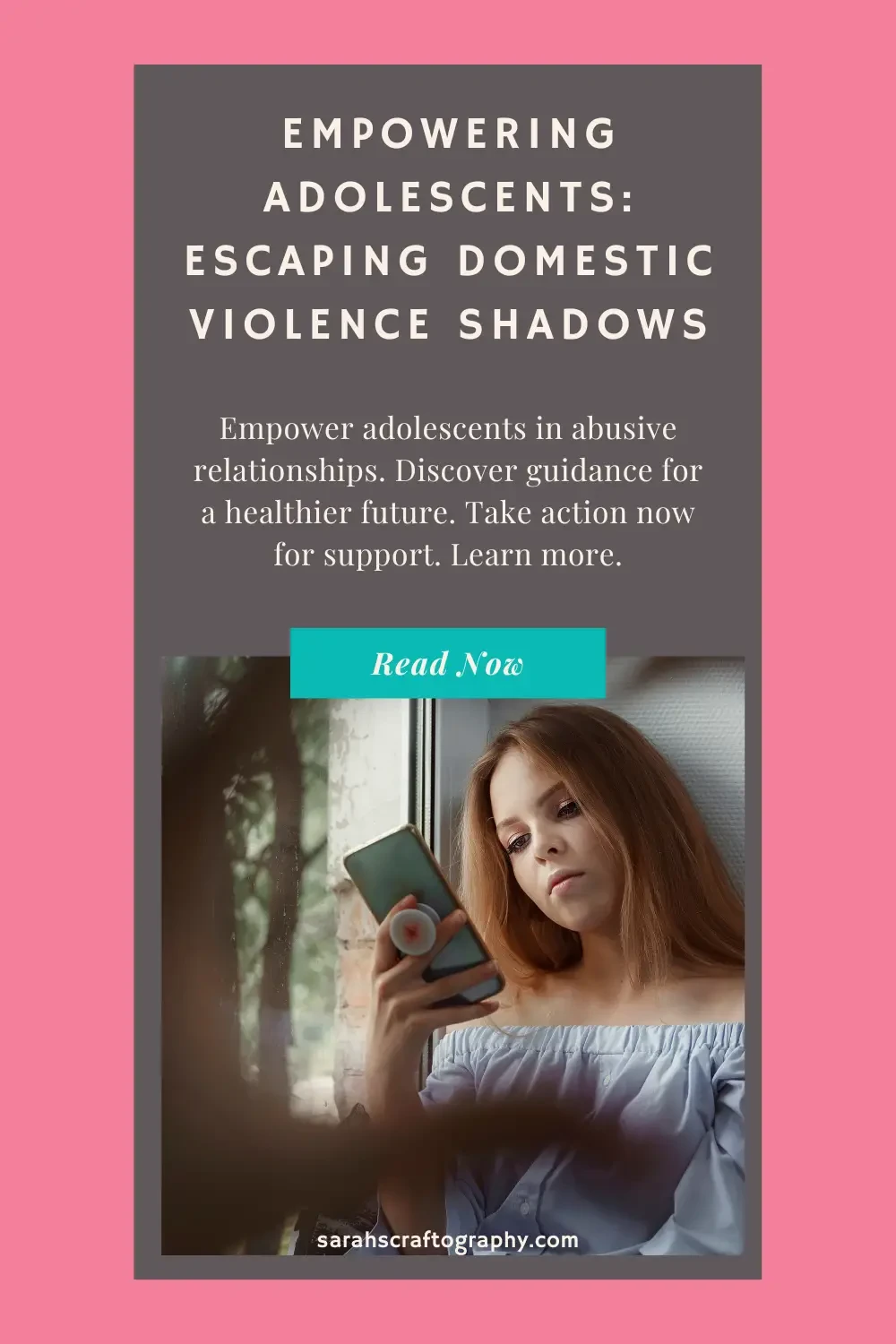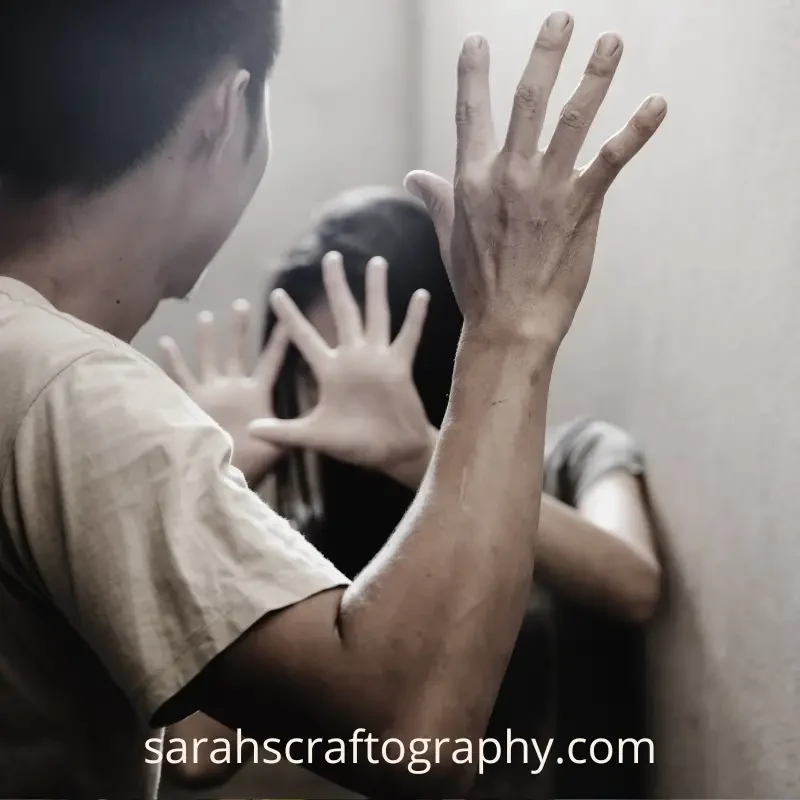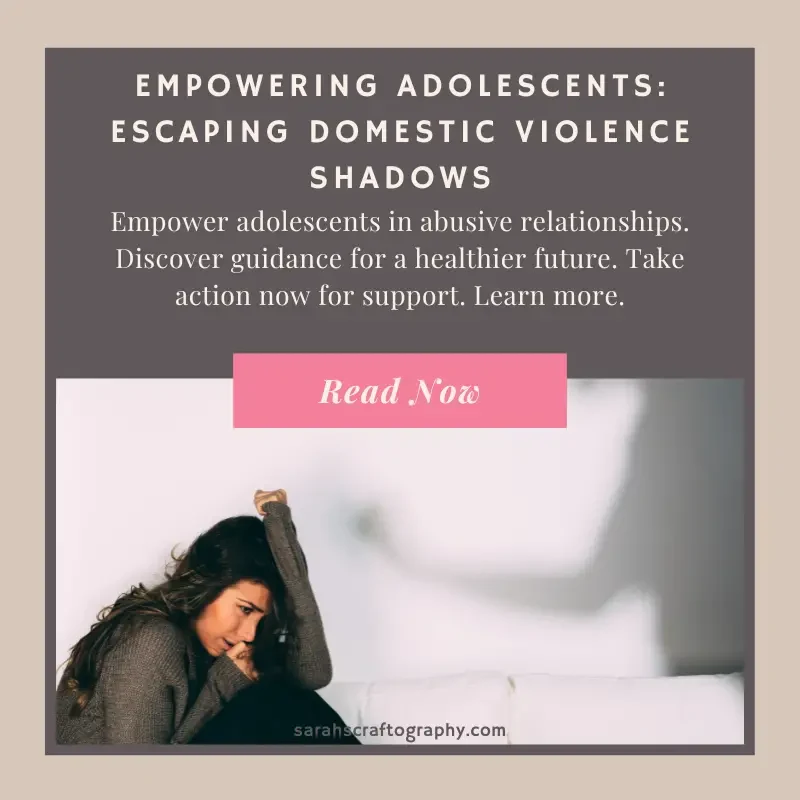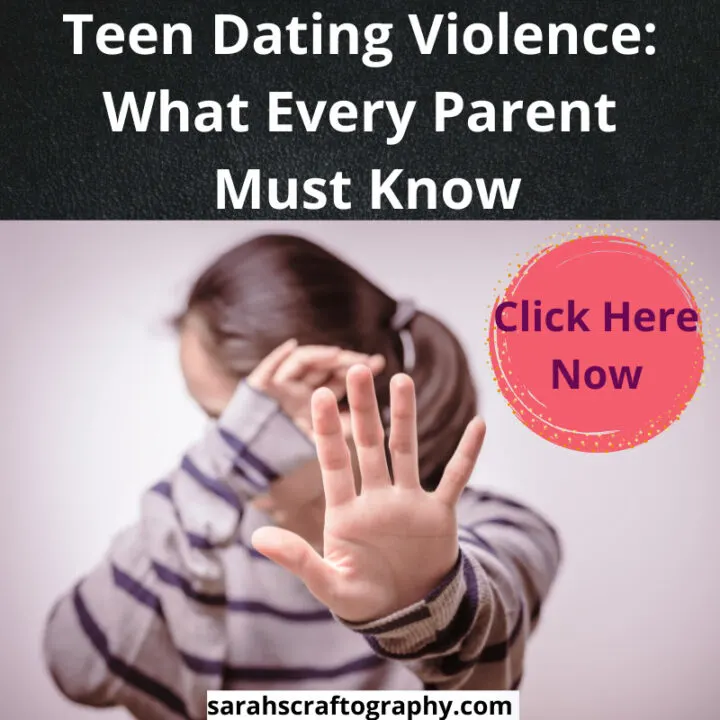Did you ever wonder about the hidden struggles that adolescents might face in their romantic relationships?
Domestic violence, a pervasive issue, casts its dark shadow over the lives of teens, a reality often underestimated.
In the tumultuous journey of adolescence, the emergence of romantic connections brings with it the potential for abuse, echoing the complexities of adult relationships.
This post delves into the silent epidemic of domestic violence among teens, shedding light on alarming statistics, nuanced types of abuse, and the unique challenges faced by young individuals.
By fostering awareness, we aim to unravel the early warning signs and empower those affected.
As we navigate the intricate dynamics of these relationships, let's remember that harm's echoes can be both blatant and subtle.
Vigilance is our key to safeguarding the vulnerable journey of our youth.
Teens and Domestic Violence: Unveiling Troubling Trends
In the whirlwind of parenting adolescents, the rollercoaster of emotions takes unexpected turns, much like the challenging topic we must confront: domestic violence among teenagers.
Imagine navigating through this tumultuous ride, where the influence of peer pressure intertwines with the inexperience of handling relationships.
It's a delicate balance, like riding a high-speed rollercoaster blindfolded, unsure of what twists and turns lie ahead.
The statistics reveal a harsh reality – nearly 1.5 million high school students experience physical abuse from a dating partner in a single year.
These numbers aren't just faceless figures; they represent the silent suffering of emotional and verbal abuse, lurking beneath the surface.
In this digital age, where texting and social media can become tools for manipulation, the dangers are subtle but pervasive.
It's akin to navigating the rollercoaster in the dark, each unexpected twist representing a potential threat that evades the notice of unsuspecting parents.
The warning signs, often misinterpreted as 'teenage moodiness' or 'typical relationship drama,' are the silent screams on this rollercoaster, drowned out by the exhilaration of the ride.
But amidst this chaos, there's a call to unite and educate our teens about healthy relationships.
Picture it as handing them a map to navigate the rollercoaster, recognizing respect as the safety harness and confidence as the guide through the twists and turns.
If you or someone you know is on this tumultuous ride, reaching out for help is an act of bravery, a lifeline thrown in the darkness.
A supportive community, open conversations, and professional resources act as the safety nets, catching us when the ride becomes too overwhelming.
Fostering an open discussion at home becomes the calm in the storm, creating a safe space where knowledge and tools empower our teens for relationships based on mutual respect.
No one should endure this rollercoaster alone.
By shedding light on domestic violence, we embark on a collective journey towards a brighter, safer future for our adolescents, where the rollercoaster becomes a thrilling ride of growth and not a perilous plunge into darkness.
Alerting Red Flags: Adolescent Domestic Violence Awareness
Understanding the signs of domestic violence among adolescents is like solving a puzzle, and it's crucial for all of us to pay attention.
This isn't just a theoretical concern; it's a real issue affecting many young people.
Let's explore the clear signals that might indicate trouble, as recognizing them can truly make a difference.
Imagine a teenager suddenly changing their style, opting for long sleeves or baggy clothes not as a fashion choice but to hide bruises or injuries.
It's like they're using clothing as a shield to cover up the pain.
Watch out for sudden shifts in behavior or mood – a once talkative teen becoming silent or a normally happy kid turning moody.
Their spirit dims, and they start walking on eggshells, afraid of setting off their partner.
Isolation can be a sign, with teens withdrawing from friends and family because their partner is pulling the strings.
It's like someone controlling them, leaving them feeling alone and helpless.
In the digital world, if you notice an excessive amount of texts and calls, it might be a way for a partner to maintain control.
The phone, once a symbol of connection, transforms into a tool of dominance.
Listen for constant apologies – a reflex from being blamed for a partner's actions.
It's a mix of guilt and confusion, a result of an abusive relationship.
Poor academic performance isn't just typical teenage disinterest; it can be a survival mode where an abusive relationship takes precedence over school.
It's like they're stuck in quicksand, and education becomes hard to reach.
If a teen flinches at sudden movements or seems constantly on edge, it's more than just nerves – they might be expecting a storm.
Recognize these signs as urgent calls for help.
In the world of domestic violence, every second matters.
It's not about being overprotective; it's about being present, paying attention, and being ready to offer support.
If you see these signs in a teen's life, don't hesitate – reach out, speak up, and help guide them to a safer place.
Time is of the essence.
Aiding Adolescents: Navigating Domestic Violence Challenges
In the rollercoaster of teenage relationships, recognizing signs of abuse is no easy feat.
As guardians, guiding our adolescents through these tumultuous waters becomes paramount.
Drawing from personal experiences, here's a heartfelt guide to assist families in navigating this delicate issue.
Begin by nurturing open communication.
Urge teens to share feelings without judgment, creating a secure space for expression.
Be a calm, attentive listener, ensuring they don't withdraw.
Educate them on abuse, stressing that it's not always visible.
Use real-life examples and media to distinguish between healthy and harmful relationships, emphasizing that love should never inflict harm.
In cases of concern about an abusive relationship, aid in crafting a safety plan.
Identify a trusted adult, memorize essential numbers, and contemplate altering daily routes to evade the abuser.
Stress the paramount importance of their safety.
Cultivate their self-worth by affirming their value regularly, fostering resilience against manipulation.
Encourage activities aligned with their talents, serving as both a confidence booster and distraction from negativity.
Seek external help when necessary, involving school counselors, therapists, or local organizations versed in domestic abuse.
Acknowledge that professionals are equipped to support both the teen and the parent.
Lead by example, demonstrating healthy relationship principles in your own life.
Teens absorb valuable lessons by observing positive adult behavior.
Supporting a teen in an abusive relationship demands patience, understanding, and intervention.
As a steadfast presence, confidante, and source of wisdom and love, guardians play a pivotal role in steering teenagers toward safety and helping them discern signs of a healthy relationship.
Facing these situations requires courage, and providing a robust foundation of support empowers teens to make informed relationship choices.
Through guidance and understanding, we assist our teens in navigating their current circumstances, fostering the resilience needed for healthier relationships in the future.
Empowering Adolescents: Resources for Healthy Relationship Paths
Domestic violence affects adolescents, creating isolating experiences.
Yet, there's hope.
If you're a teen trapped or know someone in an abusive relationship, seeking safety is not just a right; it's a necessity.
Let's navigate this path together, exploring ways to move forward safely from the shadows of domestic violence.
Create a Trusted Network
Building a support system is crucial.
Identify at least one trusted adult, whether a relative, teacher, coach, or family friend.
This person can provide emotional support, advice, and assistance with the steps to come.
Identify Safe Spaces
Determine places where you can go to feel secure.
This could be a relative’s house, a local community center, a friend’s home, or even a school counselor’s office.
Knowing you have a safe destination can ease your mind when it comes time to leave an abusive situation.
Utilize Hotlines and Text Lines
Hotlines and text lines are invaluable resources.
In the United States, the National Domestic Violence Hotline (1-800-799-7233) operates 24/7, offering advice and connecting you with local resources.
For discreet help there's love is respect, texting LOVEIS to 22522 will connect you to a highly trained advocate.
Seek Legal Protection
Understanding legal rights is essential.
In certain situations, obtaining a restraining order against the abuser may be possible.
Legal advocates from domestic violence organizations can help navigate the process.
Document the Abuse
Keeping track of incidents with dates and details is instrumental for legal action if needed.
Maintain a journal or use a safe email account to document events while preserving privacy.
Make Use of Technology
Apps designed for those experiencing domestic violence can provide resources and tools for planning a safe exit.
However, be mindful of digital footprints and take necessary precautions to maintain privacy.
Please make sure you clear your history out!
Contact Domestic Violence Shelters
There are shelters dedicated to helping individuals escape abuse, offering safe housing, counseling, legal advice, and other services.
Teenagers facing specific challenges can reach out to shelters catering specifically to youth
Fostering Adolescents' Financial Independence
If old enough to work, start saving money.
Financial independence can be empowering and is critical for long-term safety.
Focus on Your Education
Continuing education provides a sense of normalcy and opens up future opportunities.
Do not let fear strip you away from your dreams.
Every step taken toward escaping domestic violence is a move toward a safer, healthier future.
It's courageous to seek help and even braver to accept it.
Remember, you deserve a life free from fear and abuse.
Take these steps not just for immediate safety but for the promise of brighter days ahead.
In the complex journey of eradicating domestic violence in teen relationships, we find strength in a vigilant society that listens and supports.
Armed with knowledge and a compassionate approach, we stand alongside adolescents, offering a guiding light through challenging waters.
Clear, accessible resources and actionable steps empower teens to reclaim their lives.
Fostering an environment of education and open communication is crucial.
By providing unwavering support, we become beacons of hope, steering the younger generation towards healthier relationships and a violence-free future.
Together, we dismantle the barriers that shroud domestic violence and replace them with a collective commitment to understanding, empathy, and action.
As we reflect on these insights, let's ask ourselves:
How can we contribute to a culture that safeguards adolescents from the shadows of abuse?
The power to make a difference lies within our hands.
Let's amplify awareness, lend our voices to the cause, and actively support initiatives that promote love, respect, and safety.
In doing so, we pave the way for a brighter tomorrow—a tomorrow where every adolescent thrives in relationships free from fear.
Stand with us, speak out, and let's shape a future where violence has no place.
Teens And The Internet
Teen Dating Violence: What Every Parent Must Know
Teen dating violence happens everywhere. Learn ways to prepare your teen for what to look for and how to stay safe in their dating lives.
Teen Online Dating What You Need To Know
Teen online dating seems scary for the majority of people. Why, are so many people freaked out by the idea of teens dating online.

















